Discover 10 hidden attractions, cool sights, and unusual things to do in Great Basin National Park (United States). Don't miss out on these must-see attractions: Teresa Lake, Wheeler Peak, and Stella Lake. Also, be sure to include Rhodes Cabin in your itinerary.
Below, you can find the list of the most amazing places you should visit in Great Basin National Park (Nevada).
Table of Contents
Teresa Lake
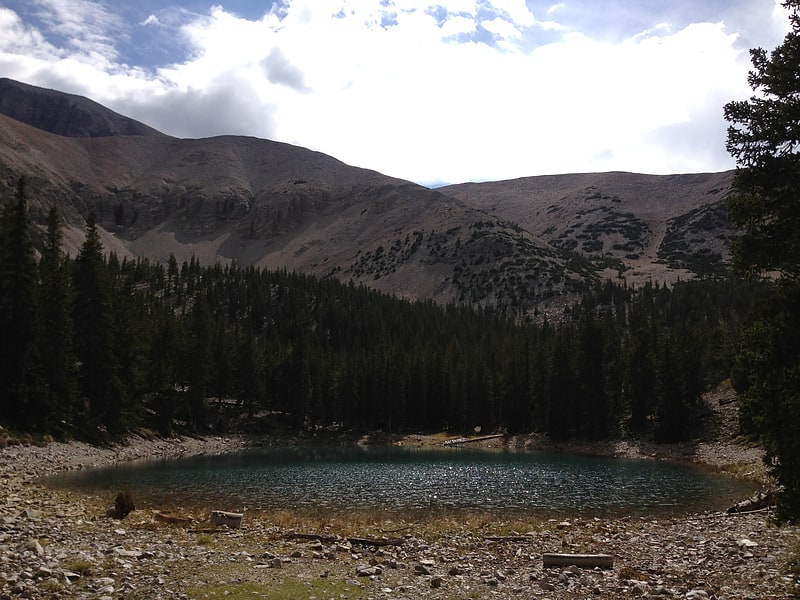
Tarn in Nevada. Teresa Lake is a glacial tarn in the Snake Range of White Pine County, Nevada, United States. It is located within Great Basin National Park, just north of Wheeler Peak. It is a prominent feature along the park's Alpine Lakes Loop Trail.[1]
Wheeler Peak

Mountain in Nevada. Wheeler Peak is the tallest mountain in the Snake Range and in White Pine County, in Nevada, United States. The summit elevation of 13,065 feet makes it the second-highest peak in Nevada, just behind Boundary Peak. With a topographic prominence of 7,563 feet, Wheeler Peak is the most topographically prominent peak in White Pine County and the second-most prominent peak in Nevada, just behind Mount Charleston. The mountain is located in Great Basin National Park and was named for George Wheeler, leader of the Wheeler Survey of the late 19th century.[2]
Stella Lake

Tarn in Nevada. Stella Lake is a glacial tarn in the Snake Range of White Pine County, Nevada, United States. It is located within Great Basin National Park, just north of Wheeler Peak. It is a prominent feature along the park's Alpine Lakes Loop Trail.
Stella, Teresa, Brown, Baker, Johnson, and Dead lakes are tarns. These glacial lakes are significant to the park’s ecosystem and their water quality is monitored on an annual basis.[3]
Rhodes Cabin
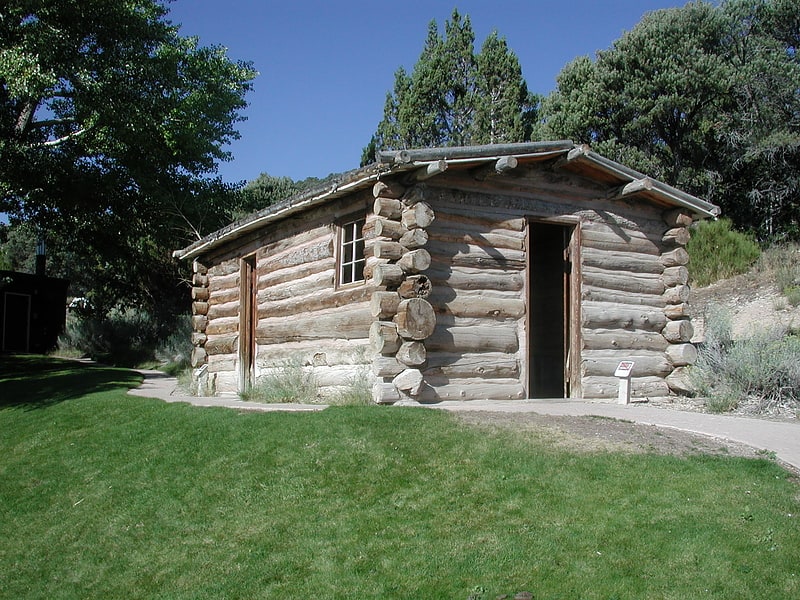
Historical landmark in White Pine County, Nevada. The Rhodes Cabin was built in 1928 to accommodate tourists visiting what was then Lehman Caves National Monument, now Great Basin National Park. The cabin was one of several built by local contractor Charles Davis near the entrance to Lehman Caves for concessioners Clarence and Bea Rhodes. Rhodes built a number of structures in the area, including the "Pine Bowery" and the "Lehman Tea Room", as well as developing access within Lehman Cave.
The one room log cabin measures 19 by 11 feet (5.8 m × 3.4 m), with two doors, four windows and a dirt floor. The cabin is now part of an interpretative exhibit.
The state of Nevada paid Rhodes $15,000 for his facilities in 1932 and donated the property to the Park Service in 1933. During the 1930s the cabin was converted for housing for National Park Service employees. It is one of the last surviving structures of its era in the park.[4]
Snake Range
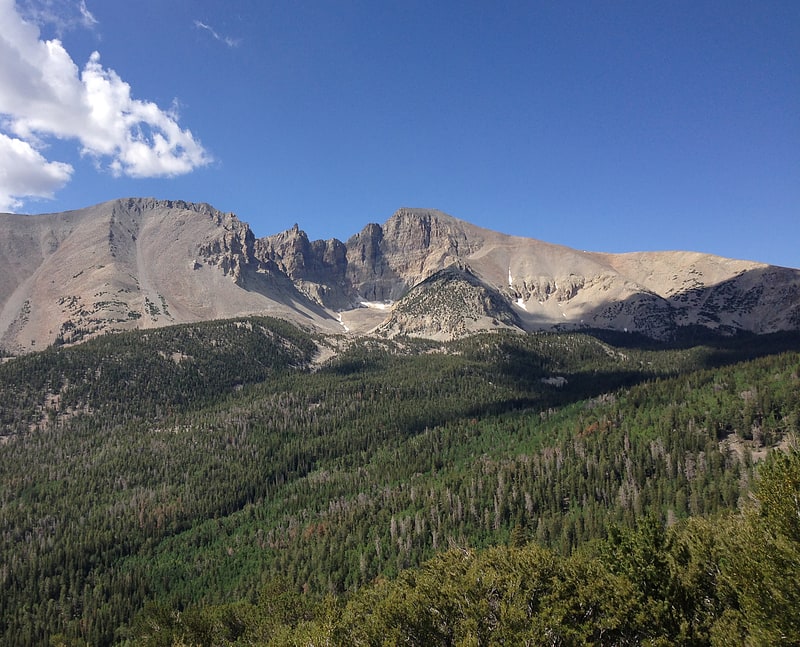
Mountain range. The Snake Range is a mountain range in White Pine County, Nevada, United States. The south-central portion of the range is included within Great Basin National Park, with most of the remainder included within the Humboldt-Toiyabe National Forest. The range reaches a maximum elevation of 13,065 feet at the summit of Wheeler Peak, the tallest independent mountain within Nevada and the second highest point within the state. The range also contains four of the five highest mountain peaks in Nevada, including all peaks greater than 12,000 feet except for Boundary Peak.[5]
Wheeler Peak Glacier
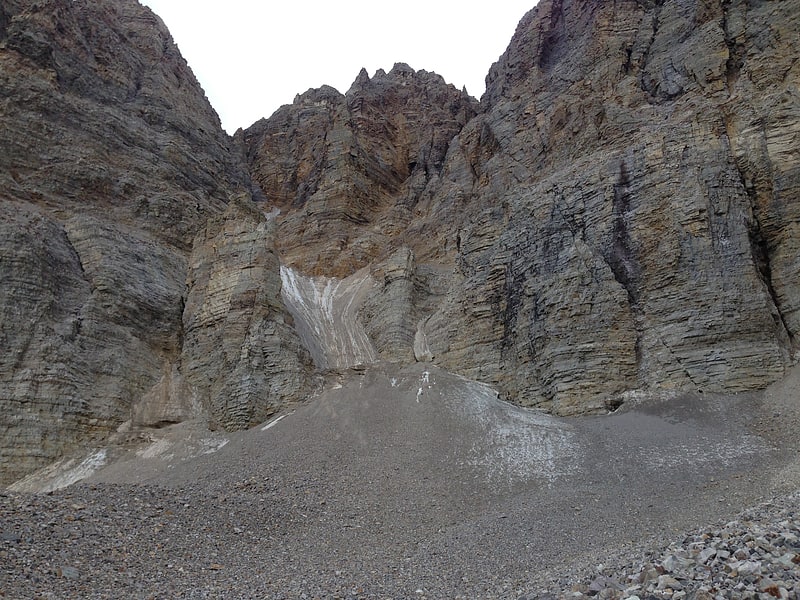
Glacier in Nevada. Wheeler Peak Glacier is a glacier situated at the base of Wheeler Peak within Great Basin National Park in the U.S. state of Nevada. It has been called the southernmost glacier in the Northern Hemisphere but is much further north than Mount Everest and glaciers of the Himalaya and also further north than Palisade Glacier in California. At a height of 13,063 feet Wheeler Peak is the tallest mountain in the Snake Range and the second tallest mountain in Nevada. The mountain top is also considered to be a horn, a peak carved and shaped by glaciers over a long period of time.
The Wheeler Peak glacier can be considered an alpine glacier which started melting at 9,000 feet (2,700 m) and the effects of the glacier can easily be seen by observing the pathways (slopes, canyons, and streams) that the melting glacial water has cut through over several years. The glacier is also unique in that it contains many rocks and minerals, including limestone (found in the Lehman Caves), marble, sandstone, shale, quartzite, granite, aragonite, moonmilk, and gypsum.[6]
Osceola Ditch
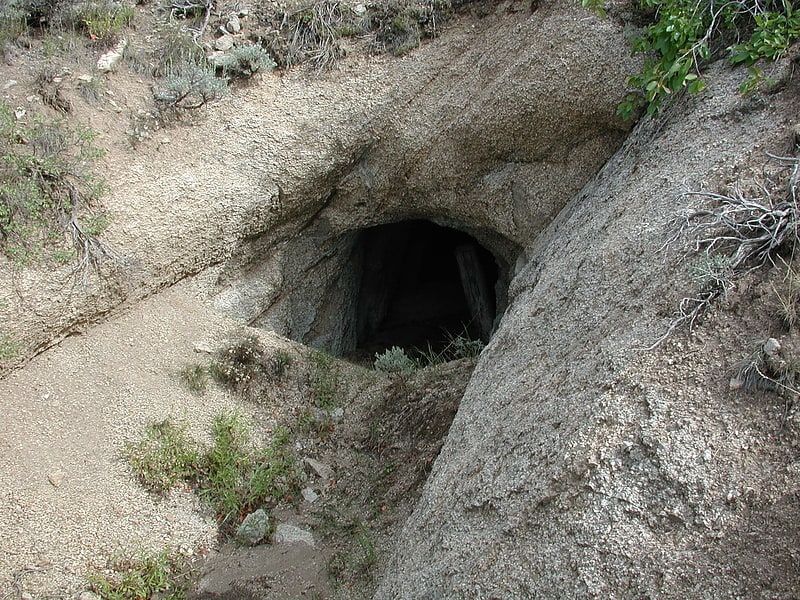
The Osceola Ditch, also known as the East Ditch, was built in 1889–1890 to convey water from Lehman Creek, Nevada to a hydraulic mine operation at Osceola. Extending for 18 mi, the ditch includes a 600 ft tunnel as well as wooden flumes. The project also includes a rock dam and headgate on Stella Lake. The ditch's terminus at Osceola, Nevada became disused during the early 1900s and was destroyed entirely by a fire in the 1940s. Much of the East Ditch is included within Great Basin National Park.[7]
Great Basin National Park
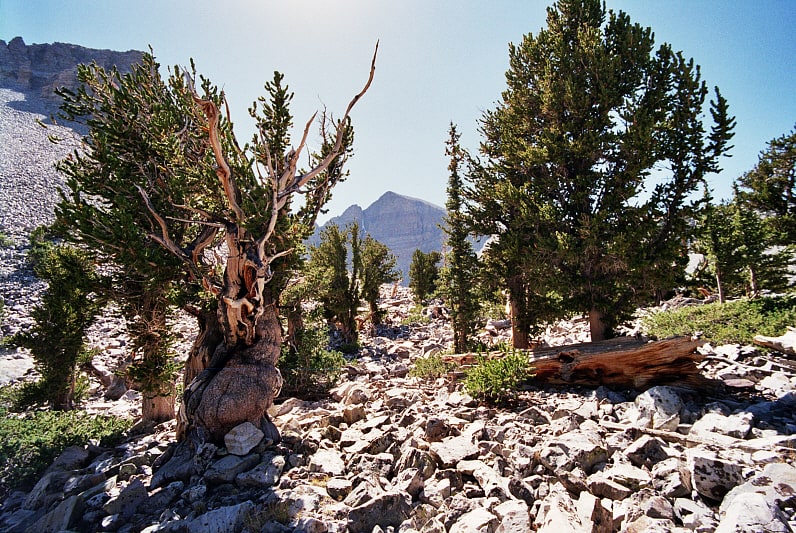
National park in White Pine County, Nevada. Great Basin National Park is an American national park located in White Pine County in east-central Nevada, near the Utah border, established in 1986. The park is most commonly entered by way of Nevada State Route 488, which is connected to U.S. Routes 6 and 50 by Nevada State Route 487 via the small town of Baker, the closest settlement.
The park derives its name from the Great Basin, the dry and mountainous region between the Sierra Nevada and the Wasatch Mountains. Topographically, this area is known as the Basin and Range Province. The park is located about 290 miles (470 km) north of Las Vegas and protects 77,180 acres (31,230 ha).
The park is notable for its groves of ancient bristlecone pines, the oldest known nonclonal organisms, and for the Lehman Caves at the base of 13,063-foot (3,982 m) Wheeler Peak, as well as Wheeler Peak Glacier.
President Warren G. Harding created Lehman Caves National Monument by presidential proclamation on January 24, 1922. The monument and its surroundings was designated a national park on October 27, 1986, following the advocacy of Congressman Harry Reid.
A number of developed campsites are within the park, as well as backcountry camping opportunities. The Highland Ridge Wilderness lies adjacent to Great Basin National Park. These two protected areas provide contiguous wildlife habitat and protection to 227.8 square miles (590.0 km2) of eastern Nevada's basin lands.[8]
Johnson Lake Mine Historic District
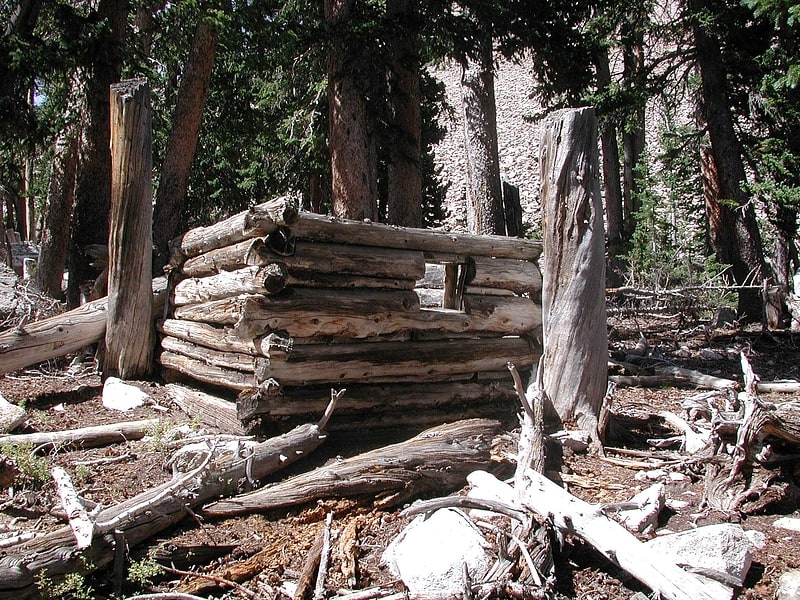
The Johnson Lake Mine is a former tungsten mine located within the boundaries of Great Basin National Park in eastern Nevada. Located on the east slope of the southern Snake Range at an elevation above 10,000 ft, the 100 acres historic district was listed on the National Register of Historic Places in 1995.[9]
Lehman Orchard and Aqueduct
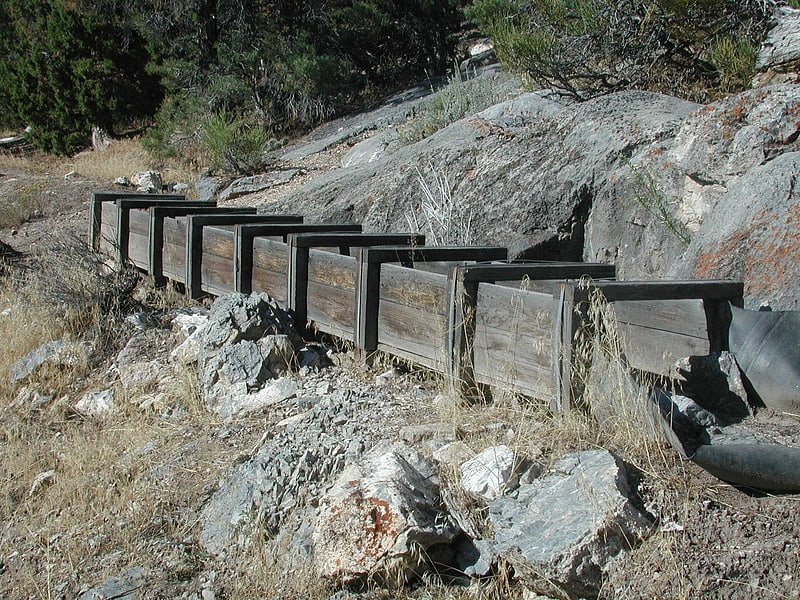
The Lehman Orchard and Aqueduct were established by Absalom Lehman, the discoverer of Lehman Caves in what would become Great Basin National Park in eastern Nevada. Lehman's orchard covered more than 7 acres, with about 40 apricot, pear, peach, crabapple, plum and apple trees in the 1930s, of more than 100 trees at its peak. Seven apricot trees and one peach tree remain. To irrigate the orchard, Lehman built a ditch from Lehman Creek 2 miles to the orchard, where it encircles the orchard. A branch above the orchard ran to a reservoir, now vanished, that was used for ice, fishing and swimming. A portion of the aqueduct has been reconstructed. Both the orchard and the reconstructed portion of the ditch are near the National Park Service's Lehman Caves Visitor Center.
The orchard and aqueduct were placed on the National Register of Historic Places in 1975.[10]